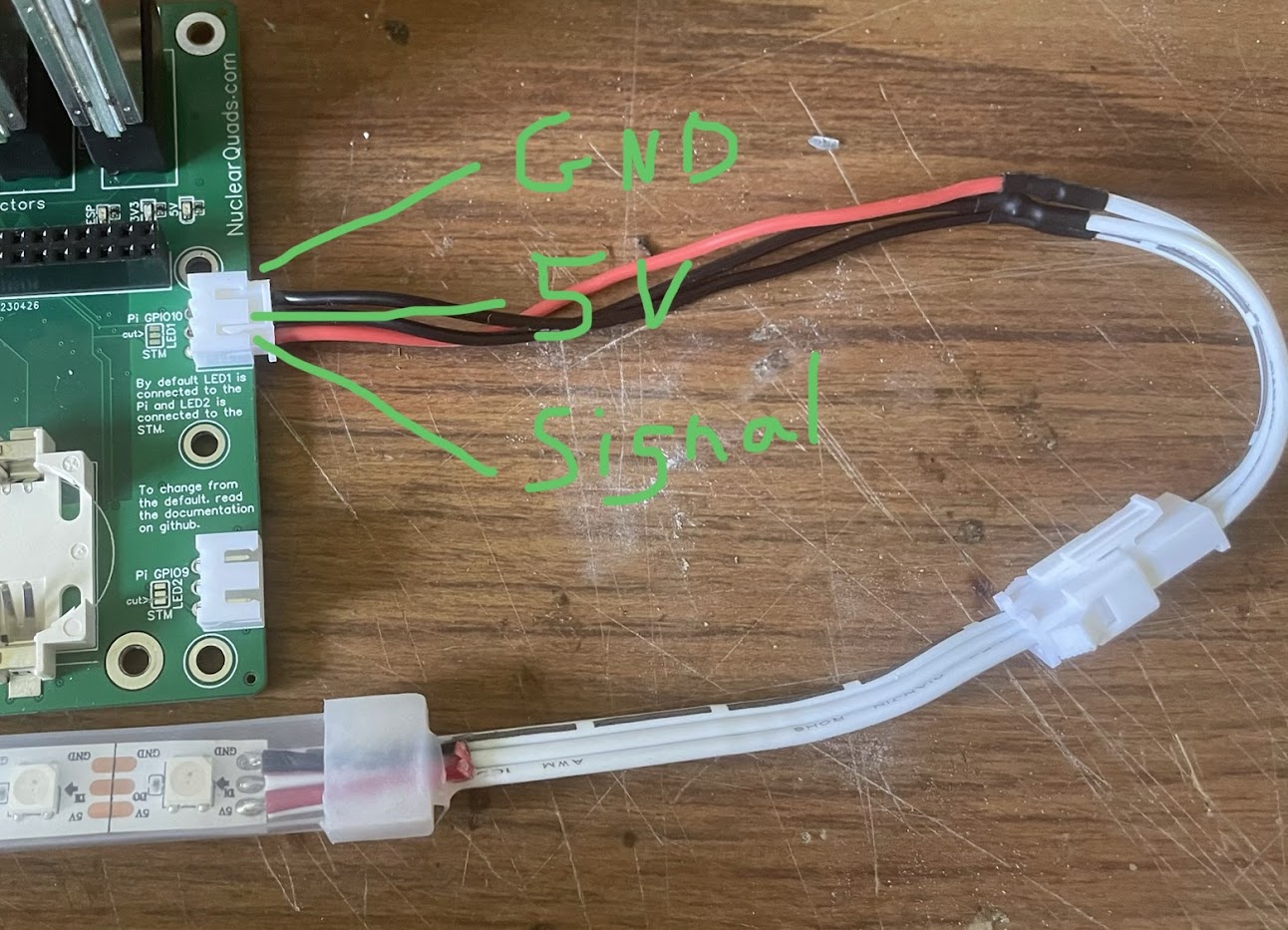NuclearHazard Fission Kit Hardware Setup
This is for the newer Fission timer. Instructions for the NuclearHazard Core kit are here.
Troubleshooting
Having trouble with your NuclearHazard timer? Look for your issue Troubleshooting page. If your problem isn’t listed, search or ask on the RotorHazard discord for the best response.
Assembly Video
Required Parts
Along with the kit, you should also have the following ready to use:
- Raspberry Pi (Version 3 or Zero 2 minimum)
- 8+GB Micro SD card for the Pi (instructions for installing the OS below)
- 1-8 RX5808s (Search for
RX5808on AliExpress) - XT60 or PoE power supply (battery or other DC power supply works)
Case Printing
Case STL Files
The link above takes you to the onshape project where the case for each version is always up to date. To download:
- Right click the “Fission” tab on the bottom
- Click Export
- Check “Export unique parts as individual files”
- Click Export
- Unzip file and import the case and lid files to your slicer
When importing the case into your slicer, it should be turned upside down to avoid needing supports.
Print without support. If you have a multi-color printer, use the fill painting on the bottom of the case to fill in the letters and graphics.
Pi OS
Prepare an SD card with a modern, fresh Raspberry Pi OS installation. Raspberry Pi OS installation instructions here. Make sure to use NuclearHazard (case sensitive) as the username. Insert the SD card into the Pi, then begin assembling the timer.
RX Installation
Since I don’t sell RXs with the NuclearHazard kits, you’ll have to order them and solder them to your Fission PCB. Search AliExpress or Ebay for “RX5808” and choose a cheap listing.
Start by tinning only one pad of each receiver footprint with solder. Be very careful to not get any solder on the connector pads! Align all the pads of the RX and reheat the tinned pad to reflow the solder. Keep holding the RX aligned until the solder is hardened. That’ll hold it still while you solder the rest of the pads.
Some of the RX carrier cards included with Version 3 and 4 need to be inserted backwards. They can be identified by the bigger alignment dot, or if the RXs aren’t changing channels. This has since been fixed and the carrier cards included with Version 5+ can be aligned normally.
If the RXs are not recognized by RotorHazard, wiggle the carrier cards and repower the timer.
Pi/Case Installation
- Install the 4 standoffs to the main PCB with 4 M2.5 screws
- Line up the Pi with the Pi connector and press firmly until it’s fully seated
- Install the other 4 standoff screws to secure Pi to the standoffs
- Place the top part of the case on your workspace upside down
- Use a soldering iron at 200-250C to press the heat-set inserts into the 4 holes in the case (as shown in instruction video)
- Place fan (pointing into case) over the fan hole
- Use 4 M3x12 screws to attach the fan, but be very careful to not over-tighten the screws
- Plug the fan into the fan connector on the PCB (Sometimes it’s nice to tie a loose knot in the wire first)
- Place the PCB upside down into the case, lined up with the case screw holes (Make sure the SD card is in the Pi)
- Put the lid on
- Install the last 4 M3x12 screws until tight
Note: the battery slot is not currently used by the software.
NuclearHazard Fission Kit Software Setup (Method 1/2)
Make sure the timer is powered with the XT60. If you power the Pi directly, the rest of the timer will not have power and that will cause problems.
SSH to the Pi. Use this guide if you’re unfamilier with SSH.
Run this command, which will download and run this script
curl -s https://nuclearquads.github.io/files/nhpisetup.sh | bash -s nuclearwifi
Or this one which will disable the NuclearHazard wifi network
curl -s https://nuclearquads.github.io/files/nhpisetup.sh | bash
The default passwords are on the RotorHazard Usage page.
Alternative Software Setup (Method 2/2)
If you’d rather download a pre-made OS image and flash it to the SD card, follow the instructions here.
Extra Instructions (if needed)
LED Strip
The pinout for the LED strip connector is shown above the connector. “S” stands for “signal” or “serial”, and should be connected to the Data/DI/IN pin on your LED strip. 5V is the power output that should be powerful enough to run several hundred standard LEDs. G is common/ground.
